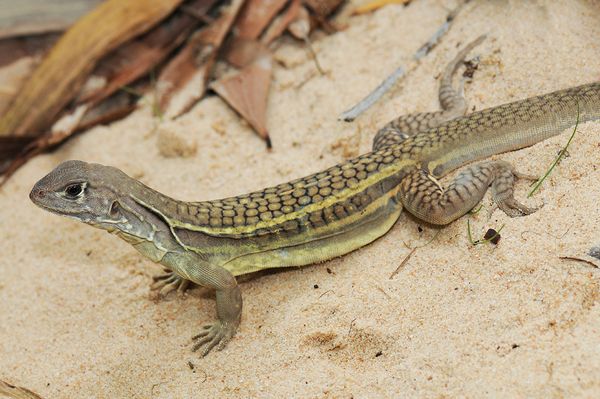Immaculate Conceptions

Go to Vietnam and you’ll likely see the lizard, pictured right, on your dinner plate or on one of you companion’s. For generations, the lizard has been consumed in the country, which makes it rare in a different sense: until recently, scientists hadn’t “discovered” the species. That’s right: A relatively common animal in Vietnam’s restaurants — now, the Leiolepis ngovantrii — was, to science, brand new. But what makes the creature even more interesting?
All of the known Leiolepis ngovantrii are female.
Scientists suspect that the animal doesn’t actually have a male counterpart. Rather, the species procreates via cloning, laying pre-fertilized eggs of genetically identical offspring. The process is called parthenogenesis — from the latin for “virgin birth.” It’s not uncommon in reptiles — about one percent of lizards reproduce via parthenogenesis — so this previously uncatalogued lizard isn’t terribly unique.
To date, most of the more complex animals have failed to reproduce in this manner. In 2006, a Komodo dragon — the world’s largest lizard — became the most complex animal to do so. And that was the exception, not the rule, as the Komodo dragon’s reproductive cycle typically requires both male and female lizards. But that year, one did in fact reproduce via parthenogenesis, much to the surprise of the scientific community. In this particular Komodo dragon’s parthenogenetic reproduction process, the mother provided one set of chromosomes, which self-replicated in the egg — no males were involved to fertilize it. The off-spring therefore had a double-set of the chromosome given by the mother. (Due to this self-replication, the offspring were not necessarily genetically identical to each other.) Because male Komodo dragon’s have two identical sex chromosomes (“ZZ”) while females have two different ones (“ZW”), only those which received the male chromosome were viable. Those which received the “W” female chromosome became “WW,” and never developed into functional beings.
Outside of the reptile world, parthenogenesis is rare: for example, it does not occur naturally in mammals. In laboratories, scientists have induced parthenogenesis in mice, rabbits, and accidentally, human cells.
Bonus fact: Mules are half donkey, half horse — and male ones are always sterile. (Female ones almost always are, too.) The only known mule to be born from mule? A clone.
From the Archives: Pregnant for Sixty Years: Basically, the opposite of the above.
Related: A cloning kit.

Leave a comment